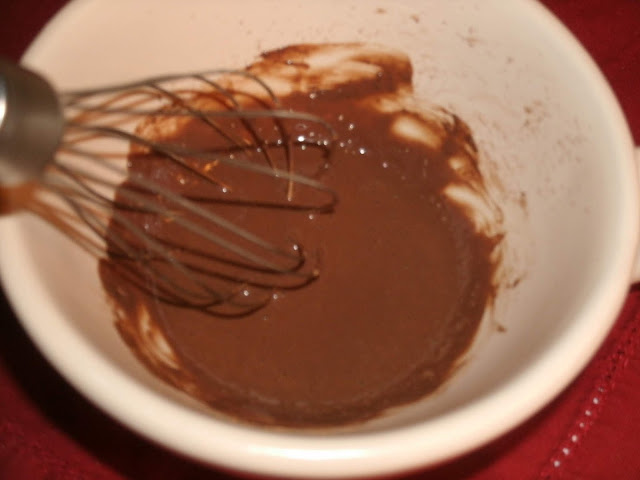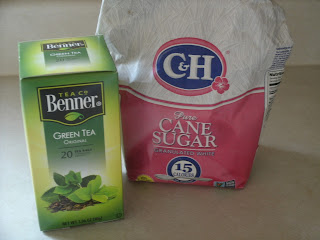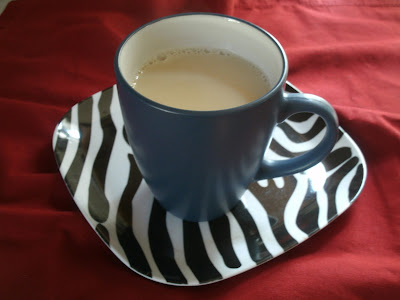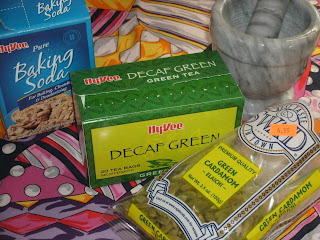Cocoa tea
Today we travel to some warm islands. It seems only fitting given that it's the middle of winter, and we are all eager for the cold, drab landscape to melt into spring. Specifically, we are visiting 3 islands in the Caribbean.
Dominican Republic is on the second largest island (Hispaniola) of the Greater Antilles chain. It has a mild tropical climate thanks to elevation (it is a mountainous island), and northeast trade winds. There are forests in wetter areas, and low scrub in drier areas. Wildlife has been greatly changed due to the introduction of cattle and goats by Spanish colonists. The majority of the population lives in urban areas, and tends to be younger with more than half of the population under age 30.
Jamaica is the 3rd largest island in the Caribbean behind Cuba and Hispaniola. While this island has a long colonial history, and has been renamed by others, Jamaica is its original indigenous name. They became independent from the UK in 1962, but have remained part of the commonwealth. It is also a mountainous island with almost half of the land being over 1000 feet above sea level. It also has a tropical climate with northeast trade winds. During the winter, colder winds from the North American mainland reach them, but their climate is still considered to be stable with little seasonal change. I dare say that they should be glad that the winds of winter have time to warm up from where I live before reaching them. They are described as having a diversity of ecosystems, but the lush forests of the past were cleared by European settlers for building and agriculture. About half of the population lives in urban areas, and bout half of the population is under 30. Historically there have been waves of people immigrating out of the country.
Saint Lucia is the second largest island of the windward group of the Lesser Antilles. This is a volcanic island that it separated from north to south by a ridge of mountains. One of the popular tourist sites is a volcanic crater with boiling sulfur springs. As an aside, I saw boiling hot springs at lake Bogoria in the Rift Valley. Thankfully there was no sulfur there. I will say that boiling hot springs are quite impressive (and loud). They have a tropical maritime climate thanks to the northeast trade winds of the region. While the forests have been reduced through lumbering, they are still described as being filled with orchids. I guess I have a small reminder of the island in my home. I have 3 orchids, 2 of which are contemplating blooming. This island also has a history of colonization by the French and British, and gained constitutional independence in 1924. In 1958 they joined the West Indies federation. In 1967 they assumed the status of association with the UK. In 1979 they finally achieved independence.
One thing these places all have in common is their cocoa tea. Even though there is no tea actually involved, I chose this because I liked the concept (and it was close to a drink I already make anyway). There are a few variations, and I simplified the recipe to what I have available. For one thing, grated chocolate balls are used to make this. It looks like I can order them online as a specialty item, but I really didn't want to. I also suspect that they have some sugar in them, and since I've been eating low carb since last June, and have seen many health benefits, I really don't want to drink a sugary beverage. I tried melting some unsweetened baker's chocolate in this drink instead, but found that it left a thick sludge at the bottom of my cup. I decided to stick with my tried and true cocoa powder. All the recipes added sugar, which I omitted for the above reason. They also involve steeping ingredients in water, then adding milk. I opted for a lower carb (and sweeter) alternative, and used almond milk. I decided not to use any water to maintain the richness of the drink, so instead of steeping additional spices to add, I used the powdered form.

Here's the lineup of ingredients. 1 cup of unsweetened almond milk, 2 teaspoons of cocoa powder, a few shakes of cinnamon, and a tiny bit of nutmeg. Then I microwaved the milk for a minute or so so it was warm.
Add a little bit of milk, and whisk until smooth.
Then I keep adding the milk and whisking periodically until I get a nice cup of warm chocolate goodness. I like dark chocolate, so I don't feel like I need to add a sweetener. I also add ginger powder and even cardamom sometimes as these, along with cinnamon, are sweeter spices. You can add a sweetener if you want, but this is the perfect cure for hot chocolate cravings, and a nice "tea" for people who don't like traditional tea.
Dominican Republic is on the second largest island (Hispaniola) of the Greater Antilles chain. It has a mild tropical climate thanks to elevation (it is a mountainous island), and northeast trade winds. There are forests in wetter areas, and low scrub in drier areas. Wildlife has been greatly changed due to the introduction of cattle and goats by Spanish colonists. The majority of the population lives in urban areas, and tends to be younger with more than half of the population under age 30.
Jamaica is the 3rd largest island in the Caribbean behind Cuba and Hispaniola. While this island has a long colonial history, and has been renamed by others, Jamaica is its original indigenous name. They became independent from the UK in 1962, but have remained part of the commonwealth. It is also a mountainous island with almost half of the land being over 1000 feet above sea level. It also has a tropical climate with northeast trade winds. During the winter, colder winds from the North American mainland reach them, but their climate is still considered to be stable with little seasonal change. I dare say that they should be glad that the winds of winter have time to warm up from where I live before reaching them. They are described as having a diversity of ecosystems, but the lush forests of the past were cleared by European settlers for building and agriculture. About half of the population lives in urban areas, and bout half of the population is under 30. Historically there have been waves of people immigrating out of the country.
Saint Lucia is the second largest island of the windward group of the Lesser Antilles. This is a volcanic island that it separated from north to south by a ridge of mountains. One of the popular tourist sites is a volcanic crater with boiling sulfur springs. As an aside, I saw boiling hot springs at lake Bogoria in the Rift Valley. Thankfully there was no sulfur there. I will say that boiling hot springs are quite impressive (and loud). They have a tropical maritime climate thanks to the northeast trade winds of the region. While the forests have been reduced through lumbering, they are still described as being filled with orchids. I guess I have a small reminder of the island in my home. I have 3 orchids, 2 of which are contemplating blooming. This island also has a history of colonization by the French and British, and gained constitutional independence in 1924. In 1958 they joined the West Indies federation. In 1967 they assumed the status of association with the UK. In 1979 they finally achieved independence.
One thing these places all have in common is their cocoa tea. Even though there is no tea actually involved, I chose this because I liked the concept (and it was close to a drink I already make anyway). There are a few variations, and I simplified the recipe to what I have available. For one thing, grated chocolate balls are used to make this. It looks like I can order them online as a specialty item, but I really didn't want to. I also suspect that they have some sugar in them, and since I've been eating low carb since last June, and have seen many health benefits, I really don't want to drink a sugary beverage. I tried melting some unsweetened baker's chocolate in this drink instead, but found that it left a thick sludge at the bottom of my cup. I decided to stick with my tried and true cocoa powder. All the recipes added sugar, which I omitted for the above reason. They also involve steeping ingredients in water, then adding milk. I opted for a lower carb (and sweeter) alternative, and used almond milk. I decided not to use any water to maintain the richness of the drink, so instead of steeping additional spices to add, I used the powdered form.

Here's the lineup of ingredients. 1 cup of unsweetened almond milk, 2 teaspoons of cocoa powder, a few shakes of cinnamon, and a tiny bit of nutmeg. Then I microwaved the milk for a minute or so so it was warm.
Add a little bit of milk, and whisk until smooth.
Then I keep adding the milk and whisking periodically until I get a nice cup of warm chocolate goodness. I like dark chocolate, so I don't feel like I need to add a sweetener. I also add ginger powder and even cardamom sometimes as these, along with cinnamon, are sweeter spices. You can add a sweetener if you want, but this is the perfect cure for hot chocolate cravings, and a nice "tea" for people who don't like traditional tea.






That one looks pretty neat. I like adding ginger to cocoa sometimes too, but I have to be careful not to give it a gritty texture.
ReplyDeleteI had a feeling that you would like this one given its lack of actual tea :)
Delete